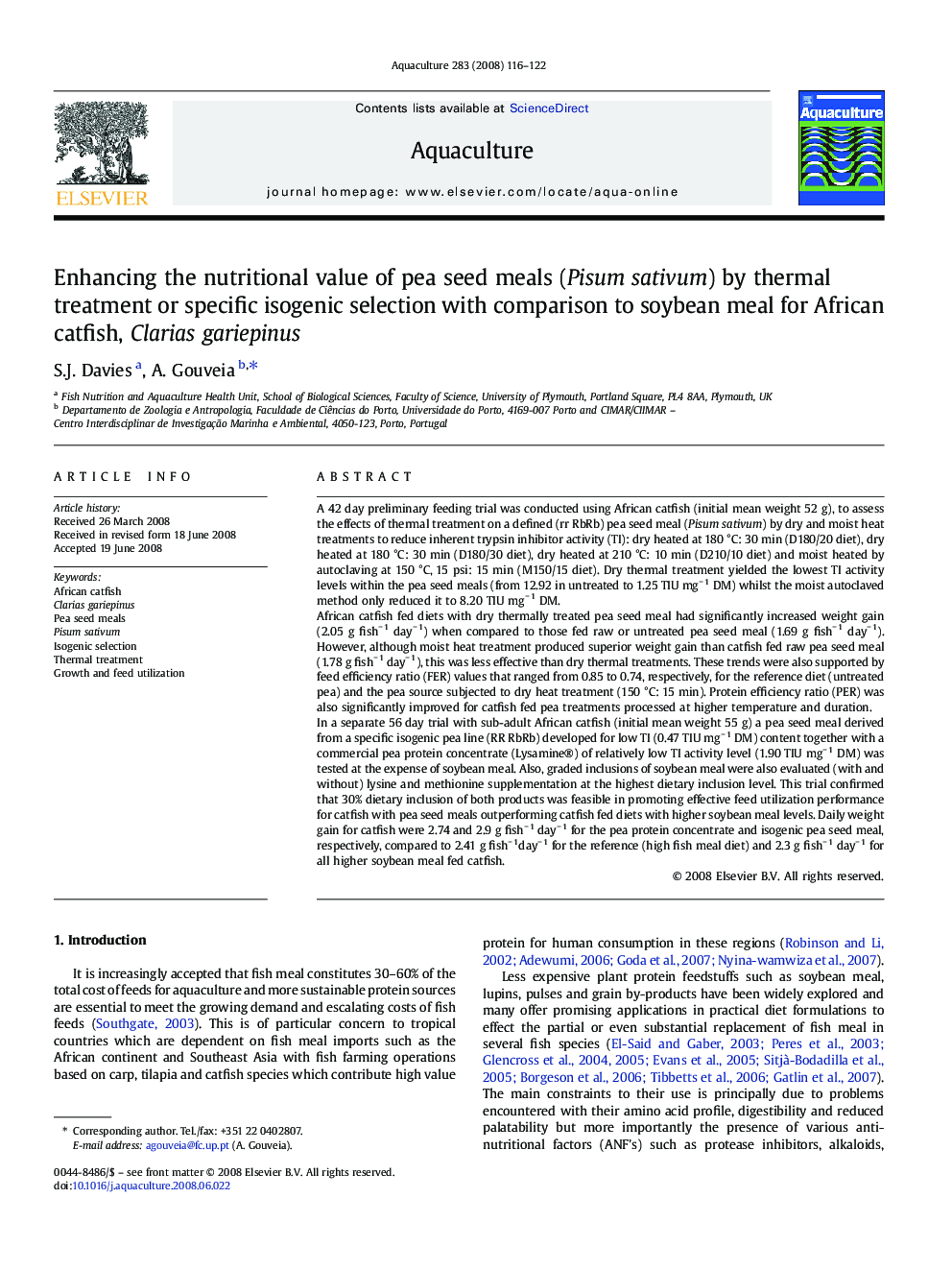| کد مقاله | کد نشریه | سال انتشار | مقاله انگلیسی | نسخه تمام متن |
|---|---|---|---|---|
| 2424484 | 1552958 | 2008 | 7 صفحه PDF | دانلود رایگان |

A 42 day preliminary feeding trial was conducted using African catfish (initial mean weight 52 g), to assess the effects of thermal treatment on a defined (rr RbRb) pea seed meal (Pisum sativum) by dry and moist heat treatments to reduce inherent trypsin inhibitor activity (TI): dry heated at 180 °C: 30 min (D180/20 diet), dry heated at 180 °C: 30 min (D180/30 diet), dry heated at 210 °C: 10 min (D210/10 diet) and moist heated by autoclaving at 150 °C, 15 psi: 15 min (M150/15 diet). Dry thermal treatment yielded the lowest TI activity levels within the pea seed meals (from 12.92 in untreated to 1.25 TIU mg− 1 DM) whilst the moist autoclaved method only reduced it to 8.20 TIU mg− 1 DM.African catfish fed diets with dry thermally treated pea seed meal had significantly increased weight gain (2.05 g fish− 1 day− 1) when compared to those fed raw or untreated pea seed meal (1.69 g fish− 1 day− 1). However, although moist heat treatment produced superior weight gain than catfish fed raw pea seed meal (1.78 g fish− 1 day− 1), this was less effective than dry thermal treatments. These trends were also supported by feed efficiency ratio (FER) values that ranged from 0.85 to 0.74, respectively, for the reference diet (untreated pea) and the pea source subjected to dry heat treatment (150 °C: 15 min). Protein efficiency ratio (PER) was also significantly improved for catfish fed pea treatments processed at higher temperature and duration.In a separate 56 day trial with sub-adult African catfish (initial mean weight 55 g) a pea seed meal derived from a specific isogenic pea line (RR RbRb) developed for low TI (0.47 TIU mg− 1 DM) content together with a commercial pea protein concentrate (Lysamine®) of relatively low TI activity level (1.90 TIU mg− 1 DM) was tested at the expense of soybean meal. Also, graded inclusions of soybean meal were also evaluated (with and without) lysine and methionine supplementation at the highest dietary inclusion level. This trial confirmed that 30% dietary inclusion of both products was feasible in promoting effective feed utilization performance for catfish with pea seed meals outperforming catfish fed diets with higher soybean meal levels. Daily weight gain for catfish were 2.74 and 2.9 g fish− 1 day− 1 for the pea protein concentrate and isogenic pea seed meal, respectively, compared to 2.41 g fish− 1day− 1 for the reference (high fish meal diet) and 2.3 g fish− 1 day− 1 for all higher soybean meal fed catfish.
Journal: Aquaculture - Volume 283, Issues 1–4, 1 October 2008, Pages 116–122